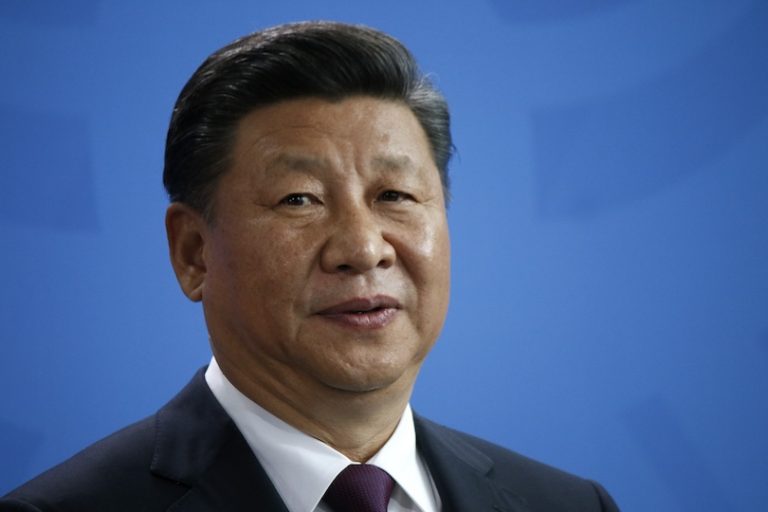As China lifted its strict COVID-19 policy in December 2022, observers noted a change in the course of Sino-US relations. Since early 2023, China and the United States have been trying to resume communications, a process that was compromised during the pandemic. However, the road to resuming Sino-US relations has not been easy. US Secretary of State Anthony Blinken planned a visit to China in February, but the trip was canceled following a spy balloon incident in the same month. In response to this situation, the Chinese government has deployed a strategy of civil diplomacy, seeking to expand its contacts with non-governmental organizations and ordinary citizens in the United States. These signals from China should not be seen as mere flamboyant actions aimed at boosting Xi’s personal image; they are historically significant and have the potential to alleviate the limitations that local governments and public institutions face in engaging with the United States.
In early 2023, an upsurge in informal dialogues between local Chinese officials and American bureaucrats, as well as interactions with American business leaders, was observed. Highlighting this change, global timea major Chinese newspaper, highlighted the importance of civil diplomacy on June 14. President Xi himself reinforced this perspective during his meeting with Gates Foundation founders Bill and Melinda Gates on June 20, poignantly remarking that “the foundation of Sino-US relations lies with its people.”
This commitment to improving person-to-person connections was manifested in several initiatives throughout the year. Tsinghua University, for example, launched a young scholar exchange program with the United States, marking a milestone as the first major exchange initiative since 2020. On August 20 and 31, Xi reaffirmed his position on Sino-American relations by responding to letters written by Xi Jinping. students of the American-Chinese Youth and Student Exchange Association in Washington State and the grandson of Joseph Stilwella famous American military general stationed in China during World War II.
Some media, like the Voice of America, believe that the Chinese actions were only propaganda work for Xi’s personal image among the Chinese. A better interpretation of these events lies in their historical context. These signals reveal a deep logic in CCP diplomacy: it is party leaders who authorize both the government and the people to engage in diplomatic activities. Due to its structure, the Chinese government is very centralized and follows a top-down model, an element particularly evident in diplomacy. China’s Foreign Ministry simply acts as a foreign policy executor, while the power to formulate foreign policy rests with the « Office of the Leading Group for Foreign Affairs of the CPC Central Committee », headed by the general secretary of the Left.
The nature of Chinese diplomacy not only makes external affairs one of the most sensitive areas within the government, but also places the Party Secretary at the center of diplomatic activity. While it is not unusual for the executive branch of many countries to direct foreign policy, few have complete control over local government, public organizations, and schools. Almost all public organizations and schools in China have a party branch to ensure policy execution. party line. « Thought of Xi Jinping« , which has become the principle of Chinese officials, asserted that Chinese diplomatic actions should be strongly focused on Comrade Xi Jinping, and that diplomatic activity at the local level should be sure to follow party boundaries. Thus, the slightest uncertainty in foreign policy creates a solid wall for local officials, and none dared to launch student exchanges before the party says yes.
We can observe a similar case decades ago. After Mao Zedong’s death in 1976, his designated successor, Hua Guofeng, took power. Hua recognized that the Maoist economy in China was unsustainable, and as the primary architect of China’s market reforms, he encouraged his officials to venture outside China to conduct surveys and market research. By the mid-1970s, Chinese officials, still influenced by late-Maoist-era beliefs that contacts with foreigners were “anti-revolutionary” and “corrupt,” feared such engagement. To allay this fear, Hua visited Romania and Yugoslavia in 1978, accompanied by a large economic survey delegation (Deng Xiaoping also visited Japan around the same time). His visits sent a clear message encouraging officials to travel to and learn from foreign countries, leading to a more than thirty percent increase in the number of Chinese delegations visiting foreign countries during the year. next.
Expanding civilian connections with the United States offers two other benefits beyond sending signals to domestic populations. First, civil ties can bypass bureaucratic processes and are less likely to be affected by diplomatic incidents. Even if the Chinese and US governments had to cancel Blinken’s visit in response to the spy balloon incident, trade and educational exchanges would not be affected by such events. Michael Pillsbury, a leading China expert, said in his speech at Peking University on October 23 that only five out of fifty communication channels between China and the United States remain today. Thus, the reconnection between the two states in multiple areas is crucial for the development of China-US relations. Second, facing serious post-pandemic economic challenges, the Chinese government is striving to promote economic growth. In its quest for economic momentum, China recently hosted the One Belt One Road summit, the Conference of the Advisory Council of International Business Leaders in Shanghai on October 14 and is preparing for the China International Import Expo in Shanghai in November. Developing civil ties is therefore a more effective and practical approach for the Chinese government at this time, compared to direct engagement with the US government.
However, China’s strategy is not without challenges. The most important challenge, as with any indirect political signal, is whether the United States correctly received and interpreted the message sent by the Chinese government. A few months after Xi issued this signal, few American media outlets echoed his words, except for a negative interpretation from Xi. Voice of America. As a result, most Americans are unaware that the Chinese government is reaching out to them. To bridge this gap, it is imperative that the Chinese side build stronger ties with American media outlets, as well as its own media outlets operating overseas. Without a clear and direct communications strategy to foster civil engagement with the United States, the efforts of the Chinese government risk being overlooked or misunderstood by the American public. Failure to do so could jeopardize the restoration of civil ties between the two nations, ties which have been significantly strained during the pandemic.
Second, although civil ties could be a viable option in times of crisis, fundamental problems in Sino-US relations still constrain their effectiveness. Despite recent high-level meetings between Chinese and US officials, the two countries continue to accuse each other on various issues, including technology blockades and Taiwan. The nature of current bilateral relations will sow confusion among civil diplomacy actors as to how far they can go in terms of civil relations and exchanges. After the « wolf warrior » diplomacy in China and the « hunting of Chinese agents » in the United States, people who work on Sino-US communications are still deeply sensitive. A clear commitment from the Chinese and US governments is therefore important for the future success of Chinese civil diplomacy.
Further reading on international electronic relations



